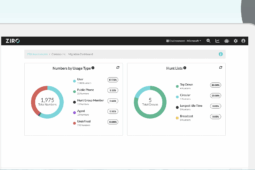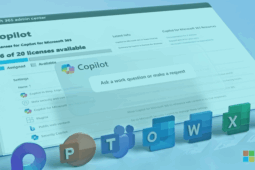
Businesses need a unified communications solution for internal and external calls.
Fortunately, Microsoft Teams offers all the features of a traditional phone system (PBX) but with the added benefits of Teams’ collaboration tools. It lets you make and receive external voice calls just like a regular business phone system.
In this ZIRO guide, we’ll walk you through how to make external calls in Teams, including the requirements and the steps involved.
What Are External Calls in Microsoft Teams?
External calls in Microsoft Teams refer to the ability to make and receive phone calls to and from traditional phone numbers (PSTN) using the Teams app.
This functionality transforms Teams into a full-fledged telephony system, either managed internally or through third-party solutions like Direct Routing, Operator Connect, or Calling Plans. It allows users to communicate with people outside their organization, such as clients, partners, and customers.
What Do You Need To Make External Calls in Teams?
Before we get to how to make external calls in teams, let’s look at the things to put in place.
Microsoft Teams Phone System License
The first requirement is the appropriate license. Specifically, you’ll need the Microsoft Teams Phone license, which allows Teams to make and receive calls over the Public Switched Telephone Network (PSTN).
There are three main licensing options:
- Teams Phone Standard: Add-on license to Microsoft Teams offering hosted telephone service with PBX capabilities. It allows you to connect to PSTN via various options, including choosing Microsoft as your PSTN carrier.
- Microsoft Teams Calling Plans: Add-on license for making PSTN calls with Microsoft as your carrier. It’s ideal if Calling Plans are available in your region.
- Teams Phone with Calling Plan Bundle: Combines Teams Phone and a Microsoft Calling Plan for PSTN connectivity. Simplifies setup by bundling phone system functionality and calling plan.
PSTN Connectivity Options
Once you have the phone system license, you’ll need a way for Teams to route external calls to and from the public telephone network.
You have four primary ways to enable this:
- Calling Plan: Purchase a calling plan directly from Microsoft, which allows you to use Teams as a phone system without third-party integrations. However, this is only available in about 33 countries, and you may have less control over call routing options and costs.
- Teams Phone Mobile: With Microsoft Teams Phone Mobile, your SIM-enabled phone number doubles as your Teams phone number. If your carrier is part of the Microsoft Teams Phone Mobile program, they can handle PSTN calling for Teams.
- Direct Routing: Use your existing PSTN provider by connecting it to Teams through Direct Routing. This involves configuring a Session Border Controller (SBC) to connect SIP trunks to Microsoft Teams, which can be complex and typically requires expert assistance from a service provider like ZIRO.
- Operator Connect: Microsoft works with selected operators to provide calling services, which can be easier to manage than Direct Routing. However, it offers fewer customization options compared to Direct Routing, and you’re limited to working with operators available through Microsoft’s program.
You can take advantage of our comprehensive Direct Routing as a Service (DRaaS) solution at ZIRO to set your PSN connectivity up faster via Direct Routing. It’s designed to tailor your Microsoft Teams calling experience according to your organization’s specific needs, with lower risk and cost.
Other Requirements
- Phone Numbers: You’ll need phone numbers assigned to your Teams users. These are obtainable via Microsoft (if using a Calling Plan) or your telephony provider (if using Direct Routing or Operator Connect).
- Teams-Enabled Device or App: You can make external calls using a Teams-certified desk phone, mobile app, or desktop app.
How to Set Up External Calling in Microsoft Teams
With the requirements in place, you can now proceed to set up external calling in Microsoft Teams by following these steps:
Step 1: Assign Teams Phone Licenses
Assign Microsoft Teams Phone licenses via the Microsoft 365 Admin Center:
- Navigate to the Microsoft 365 Admin Center.
- Go to Users > Active users.
- Select the user and assign the appropriate Teams Phone license.
You can do this individually or in bulk by selecting multiple users at once. PowerShell can be used to automate this process and efficiently assign licenses in bulk.
Step 2: Set Up a PSTN Connectivity Option
After assigning the Teams Phone license, the next step is to enable a method for connecting to the PSTN, which enables you to make external calls.
If Using Microsoft Calling Plan
- Log in to the Microsoft 365 Admin Center.
- Navigate to Billing > Purchase Services.
- Choose a calling plan based on your needs. Plans typically include Domestic, International, or Pay-As-You-Go options.
- Once purchased, assign the calling plan to users by going to Teams Admin Center > Voice > Phone Numbers.
If Using Direct Routing
- Configure a Session Border Controller (SBC): Work with your telephony provider to set up an SBC. This device connects your SIP trunks (from your existing PSTN provider) to Microsoft Teams.
- SBC Connection: In the Teams Admin Center, go to Voice > Direct Routing and configure your SBC to route calls between your on-premises PSTN infrastructure and Teams.
- Assign Phone Numbers: Obtain phone numbers from your PSTN provider and assign them to users through the Teams Admin Center.
Additional Read: Here’s Our Step-by-Step Guide to Microsoft Teams Direct Routing Configuration
If Using Operator Connect
- Open the Teams Admin Center, and go to Voice > Operator Connect.
- Choose an operator from the list of certified providers.
- Follow the operator’s instructions to integrate their services with Microsoft Teams.
- After integration, assign phone numbers to users via the Teams Admin Center.
If Using Teams Phone Mobile
- Work with a Teams Phone Mobile-certified carrier. They will provide you with the necessary service to integrate mobile numbers with Teams.
- Configure Teams to route mobile calls through your chosen carrier’s network, integrating the SIM-based numbers.
- Assign the mobile phone numbers to users in the Teams Admin Center.
Step 3: Assign Phone Numbers to Users
Now that you have the calling infrastructure in place, the next step is to assign phone numbers to your users so they can make and receive external calls.
- Go to the Teams Admin Center.
- Navigate to Voice > Phone Numbers.
- Assign phone numbers to users so they can make and receive external calls.
Step 4: Make an External Call
Once all the setup is complete, users can start making external calls from the Microsoft Teams app.
- Open the Microsoft Teams app.
- Go to the Calls tab on the left-hand side.
- Use the dial pad or search for an external number to make a call.
Best Practices for Making Microsoft Teams External Calls
Here are ways to optimize both performance and user experience when making external calls on Microsoft Teams:
- Optimize Call Quality: Use a stable, wired connection and Teams-certified devices like headsets. Regularly monitor network performance to minimize issues like latency, packet loss, and jitter for optimal call quality.
- Make Necessary Checks: If using Direct Routing or Operator Connect, check with your provider to ensure all routing configurations are correct. Also, verify that the correct phone number is assigned to the user in the Teams Admin Center.
- Improve User Experience: Train users on Teams’ external call features like voicemail and call forwarding. Enable self-service options such as voicemail transcription for added flexibility.
- Secure External Calls: Activate multi-factor authentication (MFA) and call encryption. Regularly check call logs to monitor usage and detect potential security risks or unusual activity.
- Administer Call Policies: Set calling policies, such as limiting international calls or enabling delegation. Use the Teams Call Quality Dashboard to track and troubleshoot call performance.
- Plan for Disaster Recovery: Have a backup plan for external calls in case of outages to ensure mission-critical services remain accessible and communication stays uninterrupted.
Simplify Your External Calling Setup in Teams with ZIRO
Even with a detailed guide like this, setting up Microsoft Teams for external calling can feel complex, but it doesn’t have to be.
At ZIRO, we specialize in simplifying Microsoft Teams Voice migrations by handling everything from start to finish. Whether you’re configuring a Calling Plan, Direct Routing, or Operator Connect, we ensure that the entire process is fast, smooth, and risk-free.Let us manage the complexities so you can focus on what matters most—your business. Contact us today to get started.
Ready to take your unified communications from headache to hassle-free?
No throwing darts at proposals or contracts. No battling through the back-end. No nonsense, no run-around.



